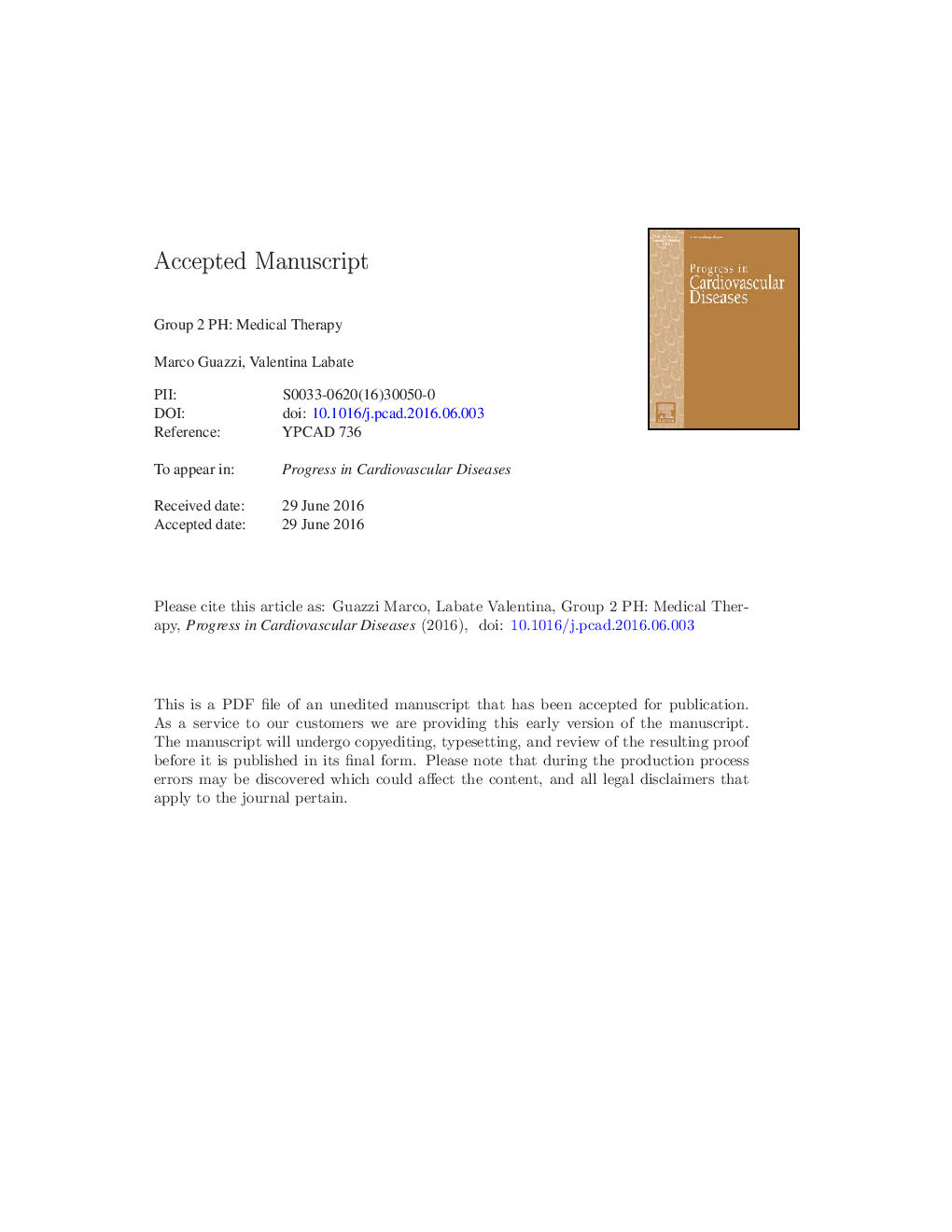| کد مقاله | کد نشریه | سال انتشار | مقاله انگلیسی | نسخه تمام متن |
|---|---|---|---|---|
| 5619665 | 1406080 | 2016 | 20 صفحه PDF | دانلود رایگان |
عنوان انگلیسی مقاله ISI
Group 2 PH: Medical Therapy
دانلود مقاله + سفارش ترجمه
دانلود مقاله ISI انگلیسی
رایگان برای ایرانیان
کلمات کلیدی
Et1HFpEFIPCPDE5PCWPmPAPCPCendothelin-1 - اندوتلین-1right ventricle - بطن راستleft ventricle - بطن چپPVR - ضبط و پخشPhosphodiesterase 5 - فسفودی استراز 5pulmonary capillary wedge pressure - فشار گوه مویرگی ریویTAPSE - مخروطیPDE-5 inhibitors - مهارکننده های PDE-5heart failure - نارسایی قلبیHeart failure preserved ejection fraction - نارسایی قلبی کسر تخلیه را حفظ می کندNitric oxide - نیتریک اکسیدPulmonary vasodilators - وازودیلاتورهای ریویPulmonary hypertension - پرفشاری خون ریویProstaglandins - پروستاگلاندین ها
موضوعات مرتبط
علوم پزشکی و سلامت
پزشکی و دندانپزشکی
کاردیولوژی و پزشکی قلب و عروق
پیش نمایش صفحه اول مقاله

چکیده انگلیسی
Pulmonary hypertension (PH) secondary to left heart disease, classified as Group 2, is a widely underestimated target of therapy. Prevention and treatment of initial subclinical stages are not valued as a priority in the management of this chronic disease population, whereas attention is high for PH consequences in patients with advanced heart failure (HF) requiring a left ventricular mechanical assist device or heart transplant candidates. Even so, there is a growing interest toward the evidence of a clinical and prognostic role of PH in the elderly populations and in HF with preserved ejection fraction (HFpEF). Certainly, along with a prevalence definition not yet defined, the search for effective pharmacological approaches that might favorably affect the aging process and the natural history of HFpEF from earlier stages is not an easy task. Pharmacological studies that have tested some traditional pulmonary arterial hypertension approved drugs (i.e., prostanoids and endothelin-1 receptor blockers) primarily in PH and HF with reduced ejection fraction have not been positive, especially because of concomitant side effects, i.e., systemic hypotension, fluid retention and hepatic toxicity. In recent years, interest has moved toward drugs overexpressing the nitric oxide (NO)-cyclic guanosine monophosphate pathway with recent availability of well-tolerated selective pulmonary vasodilators, such as phosphodiesterase type 5 inhibitors and guanylate cyclase stimulators. Single center studies performed with these drugs have shown good tolerability and safety profile providing alternating hemodynamic results mainly because of recruitment of patients at different stages of the pulmonary vascular disease. Nonetheless, the overexpression of NO pathway appears to remain the most solid background for targeting lung microvessel dysfunction and treating RV dysfunction since the earliest stages of the disease.
ناشر
Database: Elsevier - ScienceDirect (ساینس دایرکت)
Journal: Progress in Cardiovascular Diseases - Volume 59, Issue 1, JulyâAugust 2016, Pages 71-77
Journal: Progress in Cardiovascular Diseases - Volume 59, Issue 1, JulyâAugust 2016, Pages 71-77
نویسندگان
Marco Guazzi, Valentina Labate,